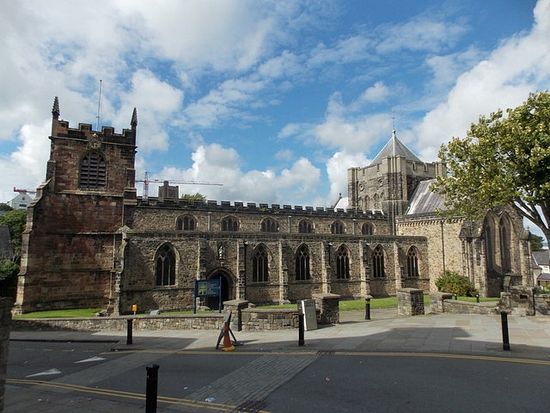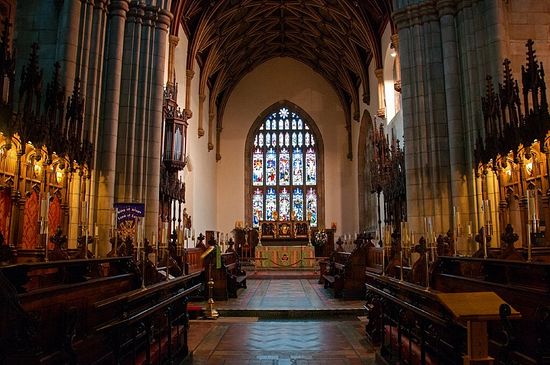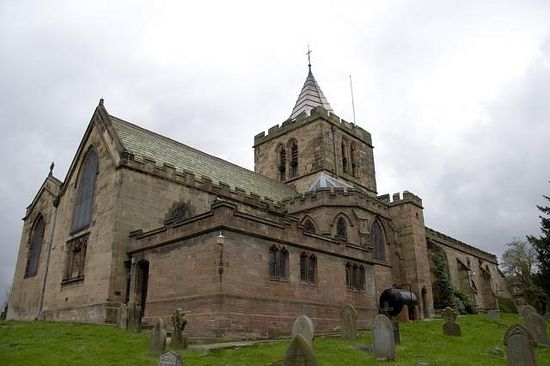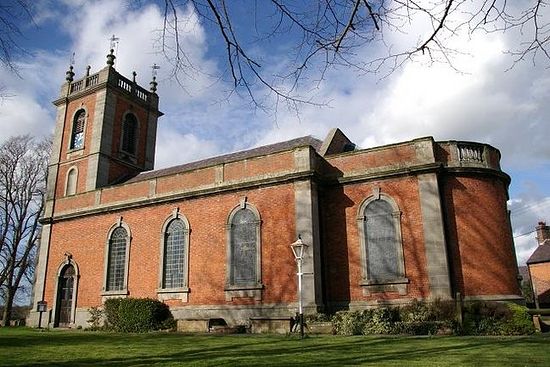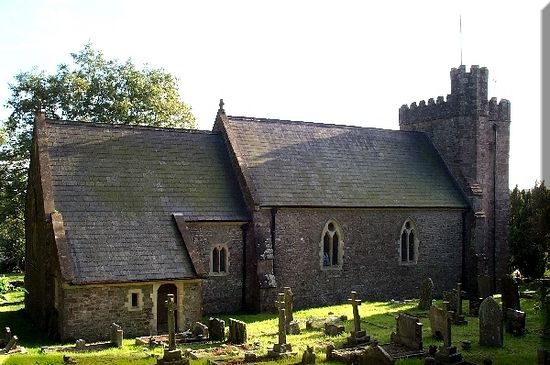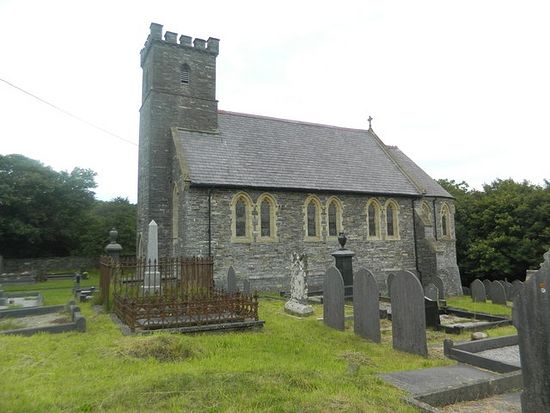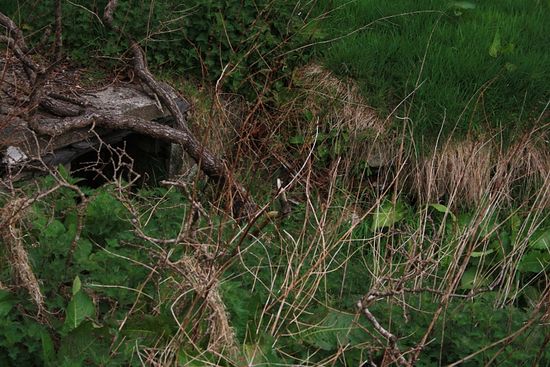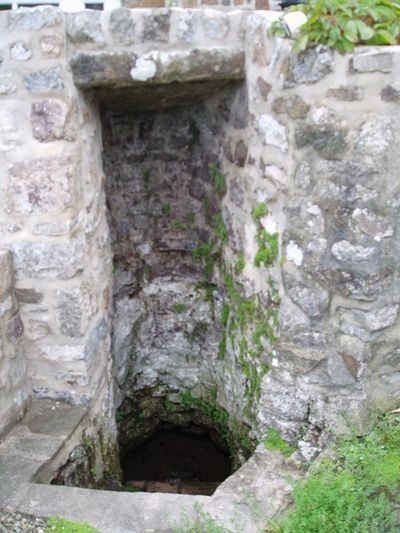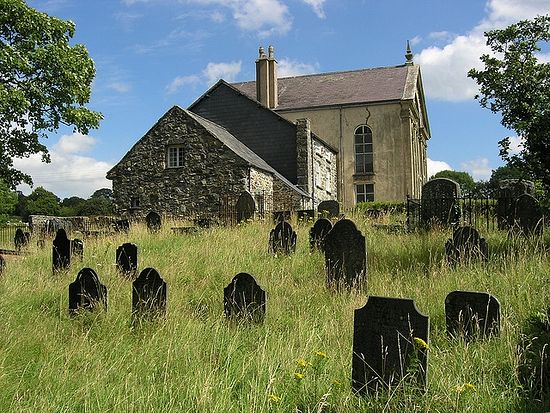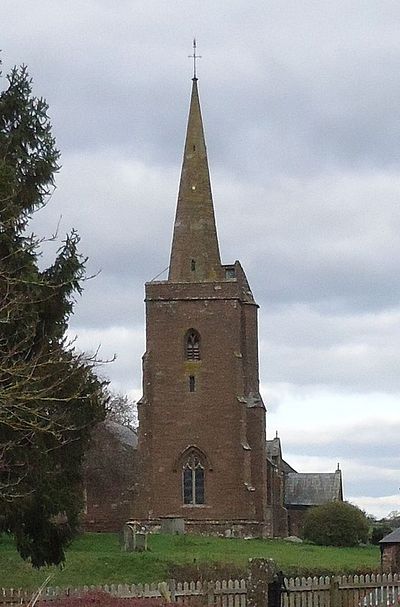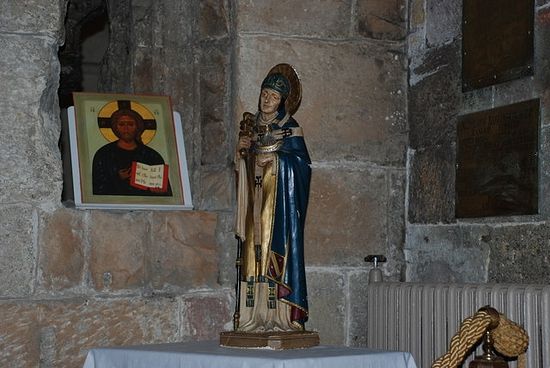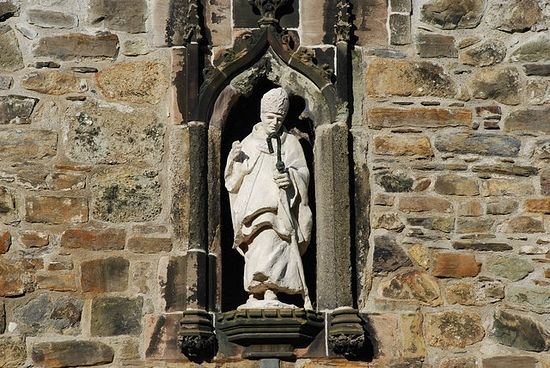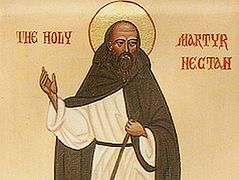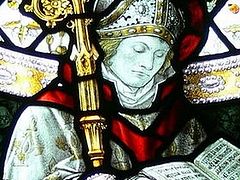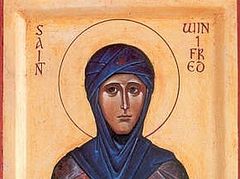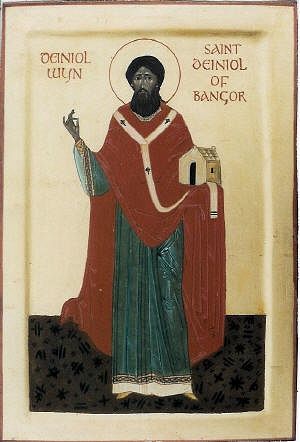 St. Deiniol of Bangor
St. Deiniol of Bangor
According to tradition, St. Deiniol received land for establishing Bangor Fawr (Great Bangor) Monastery from the local King of Gwynedd named Maelgwn, who became the monastery’s patron. Deiniol built his (originally small and humble) monastery in a low-lying area to prevent raids from pagan pirates. Around the cells which were like huts St. Deiniol arranged an enclosure made of upright poles with branches woven between them. The man of God gathered many disciples around him who went out to evangelize the surrounding region. Thus, with time, many converts to Christianity joined the monastery: some of them became monks, while others came to live together with their families within the monastery’s territory (such was a popular custom of Celtic monasteries). Thus the monastery grew.
St. Deiniol may have served as abbot of both monasteries – Bangor Fawr and Bangor on the River Dee - which gained wide renown all over Britain. According to the Venerable Bede, Bangor Fawr Monastery over a short period of time became one of the greatest monastic centers among Britons and no fewer than 2000 monks lived in it. Tradition says that Deiniol was not only abbot, but also the first bishop of the newly-established Diocese of Bangor, which exists to this day. If this see was founded in about 545 (other sources give the year 525), then it appears that Bangor was one of the earliest dioceses in all Britain. In the Life of St. David of Mynyw, patron-saint of Wales, it is written that David took part in an important Church Synod of Brefi about the year 545 and that among other participants of that synod were Sts. Dyfrig and Deiniol of Bangor.2 The Synod was dedicated to the struggle with the Pelagian heresy and issues of discipline were discussed at it as well. This fact indicates the considerable personal authority of Deiniol as a Church figure of that time.
St. Deiniol reposed in the Lord in about 584. After death he was buried on the island of Bardsey, formerly one of the most prominent monastic strongholds of the Welsh land, where, according to tradition, “20,000 saints of God rest in peace.” Many miracles were associated with the holy Abbot and Bishop Deiniol. Thus, once robbers stole oxen from a ploughman. Then, at the command of Deiniol, stags started faithfully working in the fields instead of the lost oxen. Another time a seriously ill woman who lived not far from Pembroke and whom no doctors could help came to the holy well founded by Deiniol. She drank some water from it and was instantly healed.
The Cathedral in the small picturesque Welsh city of Bangor is dedicated to St. Deiniol, and it remains a destination of pilgrimages. The original monastery founded by St. Deiniol in the sixth century is believed by many researchers to have been located precisely on the site of the present Cathedral. Bangor is one of the six ancient cathedral towns of Wales (with cathedrals extant), all of them closely connected with early holiness in this land: St. Davids, Llandaff, Bangor, St. Asaph, Brecon and Newport.
Our St. Deiniol is often called “Deiniol the Elder” in order to distinguish him from another saint with the same name who was Abbot of Bangor early in the seventh century. The latter is known as “St. Deiniol the Younger”, and his feast-day is on November 22 / December 5. The Welsh Bangor should not be confused with the town with the same name in Northern Ireland where another famous Celtic monastery existed from the sixth century.
A tragic event connected with the Welsh Monastery of Bangor (most likely it was Bangor-on-Dee Monastery) occurred in 604. In that year the pagan King Ethelfrith of Northumbria (who ruled from 593 till 616) led his army against the Britons. Then the Battle of Chester took place between Angles and Britons. Before the battle the British soldiers asked the Bangor monks to gather near the battlefield, 1250 of them, to pray for their people. However, not only did the pagan Angles win the battle, but they also massacred nearly all the monks from Bangor (according to tradition, only 50 of the 1250 monks escaped death). Many centuries later the great composer Ludwig van Beethoven put this story to music (“The Monks of Bangor’s March”), and the Scottish novelist Walter Scott related it in one of his poems.
A number of parish churches in various regions of Wales are dedicated to St. Deiniol, showing his sizeable influence in the early period of Welsh Orthodoxy. These churches include those in the villages of Worthenbury near Wrexham and in Hawarden in the county of Flintshire in North Wales as well as other churches in the same county. Hawarden church boasts many beautiful stained glass windows created by the eminent painter Edward Burne-Jones (1833-1898). There was a fair in honor of the saint in this village, and there is “St. Daniel’s estate” on its territory. The church in the hamlet of Itton in Monmouthshire, in the country’s southeast, is dedicated to him as well; the church is from the fourteenth century. Remarkably, In Welsh, Itton used to be called “Llandeiniol”, which means “church of St. Deiniol”. There are other churches dedicated in honor of the saint in South Wales. On the western shore of Wales, near Cardigan Bay, there is a village called Llanddeiniol in the county of Ceredigion where a local and very ancient church bears the name of St. Deiniol.
There is also a church which bears the name of St. Deiniol in the village of Llanuwchllyn in Gwynedd, close to the large Bala lake. This village once hosted an annual fair in the memory of St. Deiniol. The church in the remote village of Llanfor in the same county is dedicated to Sts. Deiniol and Mor; unfortunately, this church is now fallen into disuse. However, there is a still surviving holy well of St. Deiniol just near the churchyard in Llanfor. Another holy well of St. Deiniol can be found in the village of Penally in Pembrokeshire. This village is also famous for its surviving early English cross and as the possible birthplace of another great Welsh saint named Teilo. The Church in Marchwiel village near Wrexham was once dedicated to St. Deiniol, but today its patron-saint is St. Marcella. Finally, the small eleventh century church in the village of Llangarron (also Llangarran) in the English county of Herefordshire near the Welsh border is dedicated to our saint. St. Deiniol is also venerated in Brittany, where he may have lived for some time in his youth and where three churches are dedicated to him in the Cotes-d’Armor and elsewhere.
In 1889, the British statesman and Prime-minister William Ewart Gladstone (1809-1898) founded a library in the Flintshire village of Hawarden, mentioned above, which was named after St. Deiniol. There he transferred more than 30,000 of his books from nearby Hawarden castle. Since 2010, this library, which is reputed to be the largest residential library in Britain, has borne the name of Gladstone.
The city of Bangor in Gwynedd near the Menai Straits (north-western Wales) from time immemorial has been regarded as the main center of veneration of St. Deiniol. The monastery founded here by this saint was first plundered in 634 and then again in the late eleventh century by Vikings. Nothing survived from the original monastery, but construction of the new Norman cathedral began in about 1120. This cathedral was built in the Norman style and was in the shape of a cross, around 130 feet in length. In 1211 the cathedral was destroyed by the army of English King John the Lackland, who invaded Gwynedd. The cathedral was soon restored soon after that but later in the same century (1282) it was seriously damaged by the army of the English King Edward I. It was also said that during one Welsh rebellion in 1402, parts of the cathedral were burned to the ground, but soon afterwards large-scale reconstruction began, which was completed by 1532. In the nineteenth century, the outstanding English architect Sir George Gilbert Scott (1811-1878) was in charge of renovating this ancient Cathedral. Among the treasures of the Cathedral there are: statues of St. Deiniol on the exterior and inside the Cathedral building, an icon of St. Deiniol, stained glass images of the great Welsh Saints Dyfrig, Deiniol and Beuno, and a rare fifteenth century oak carving of Christ. Christians of various denominations visit this glorious church to this day.
Holy Hierarch Deiniol of Bangor, pray to God for us!

